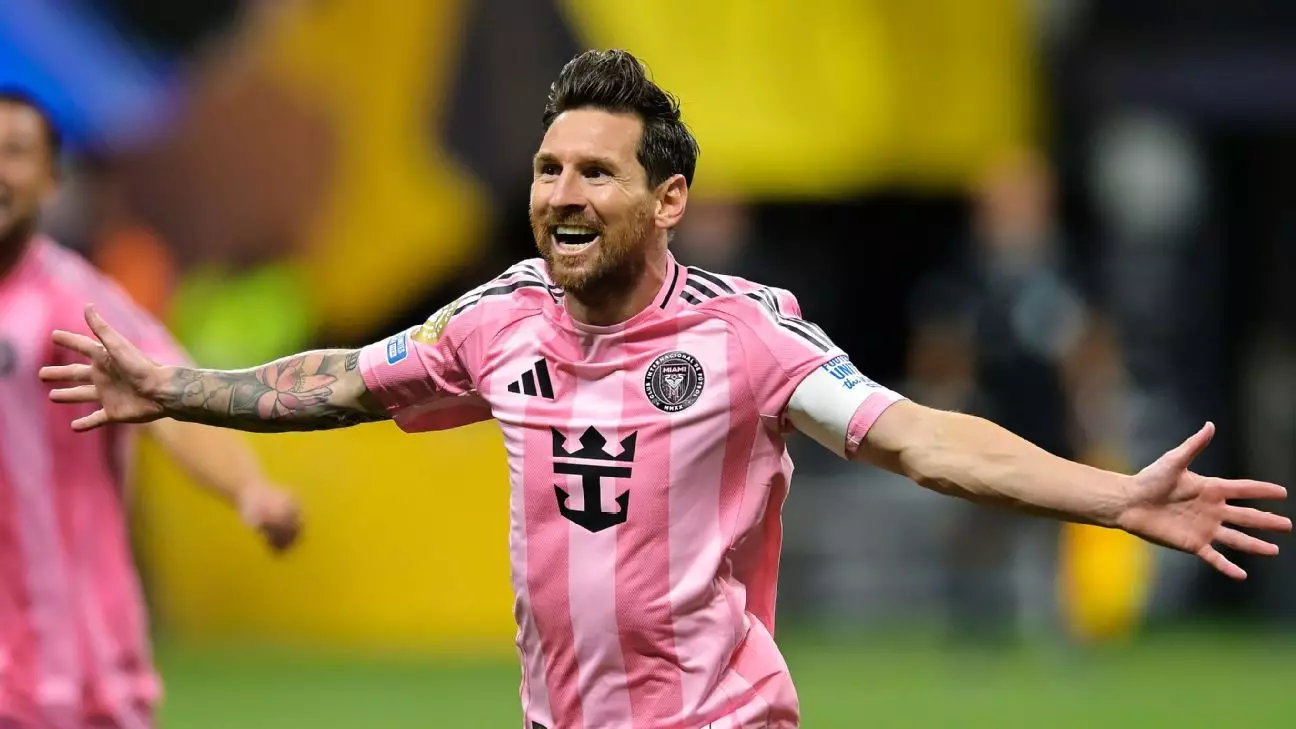Lionel Messi’s financial ascendance in Major League Soccer (MLS) solidifies his status as the league’s premier asset for the second consecutive year. The merger of soccer prowess and lucrative contracts saw his guaranteed compensation soar to a striking $20.45 million, as disclosed by the MLS Players Association. This figure, while already impressive, only scratches the surface of his overall earnings, which includes significant endorsements from global brands like Adidas and a novel revenue-sharing agreement with Apple’s broadcasting services. The magnitude of these figures highlights not only Messi’s exceptional skill but also his drawing power, which has become essential in revitalizing the league’s brand.
Figures from Sportico indicate Messi could rake in a jaw-dropping $150 million over the duration of his two-and-a-half-year contract with Inter Miami and MLS. Such earnings magnify the financial landscape of the league, shifting it in a direction dominated by a singular talent. Beyond performance metrics and match attendance, Messi’s presence alone alters ticket sales, merchandise revenues, and global viewership, thereby embodying the economic golden goose that the league has desired for years.
Shifting Financial Paradigms in Major League Soccer
The contract landscape paints a clear picture of a league in transformation. Following Messi, Toronto FC’s Lorenzo Insigne also holds a sparkling contract at $15.44 million, yet he ultimately remains far behind Messi. The noticeably lower earnings of other players, including Messi’s teammates such as Sergio Busquets at $8.5 million, raise questions about pay inequality and the impact of a superstar’s presence in a team-oriented sport. The discrepancy speaks volumes about how franchises prioritize star players to not only enhance team performance but also to boost their financial standing.
In terms of spending, Inter Miami’s total guaranteed compensation of $46.84 million dwarfs that of its closest competitor, Toronto FC, which allocates $34.15 million. This staggering difference of over $12 million reflects a divide not just in financial tactics but in overall ambition. While the Herons dominate financially, other teams are grappling with their own budgets. Montreal’s frugality, highlighted by an expenditure of just $11.99 million, suggests a stark contrast in strategies, leading to questions about the balance of competitiveness within MLS.
The Evolution of Player Salaries
A positive trend appears when examining the broader landscape of player salaries in MLS, with the average guaranteed compensation for all players rising to $649,199—a 9.22% increase from the previous year. The growth is encouraging, highlighting the league’s increasing commercial viability. More players are earning lucrative paydays, with 131 players now surpassing the $1 million mark in guaranteed compensation, compared to 115 in the previous year. This upward trajectory signals the ongoing evolution of soccer in America, creating an environment ripe for talent attraction and retention.
However, the disparity remains glaring between top earners like Messi and the average player. This can breed discontent or a lack of cohesion within teams, as players not in the superstar tier may feel undervalued despite their contributions. When larger contracts dominate headlines, the stories of hardworking, lesser-known players can often fade into obscurity. Balancing such financial inequalities could become crucial for the league’s long-term success. As MLS continues to mature, maintaining a competitive balance while acknowledging star power will require deft marketing strategies and thoughtful fiscal management.
The Future of MLS Amid Financial Disparities
With the current Collective Bargaining Agreement lasting until the end of the 2027 season, questions about salary structures and equitable distribution of wealth will grow increasingly complex. As teams deal with various market conditions and player value, how they manage their salary budgets will be critical for both competitiveness and profitability. The league’s allure continues to grow, driven largely by high-profile foreign investments and star acquisitions, but it also brings challenges that have yet to be fully addressed.
Ultimately, while Messi’s partnership with MLS presents an exhilarating chapter for soccer in North America, it also serves as a reminder of the balancing act that leagues must perform. As long as mega-deals attract global attention, the eyes of fans, stakeholders, and teams alike will remain fixed on how these financial decisions unfold, both on and off the pitch.

